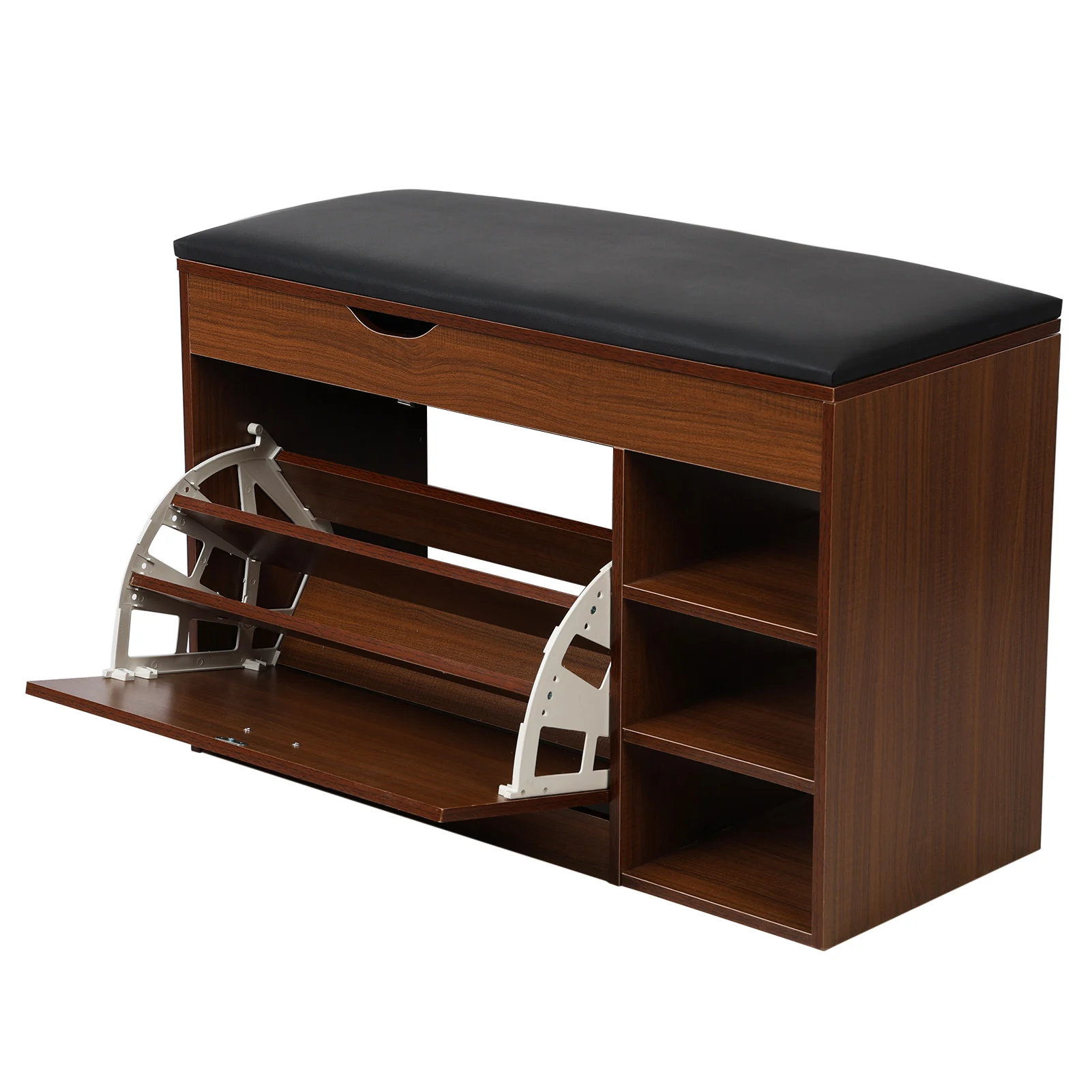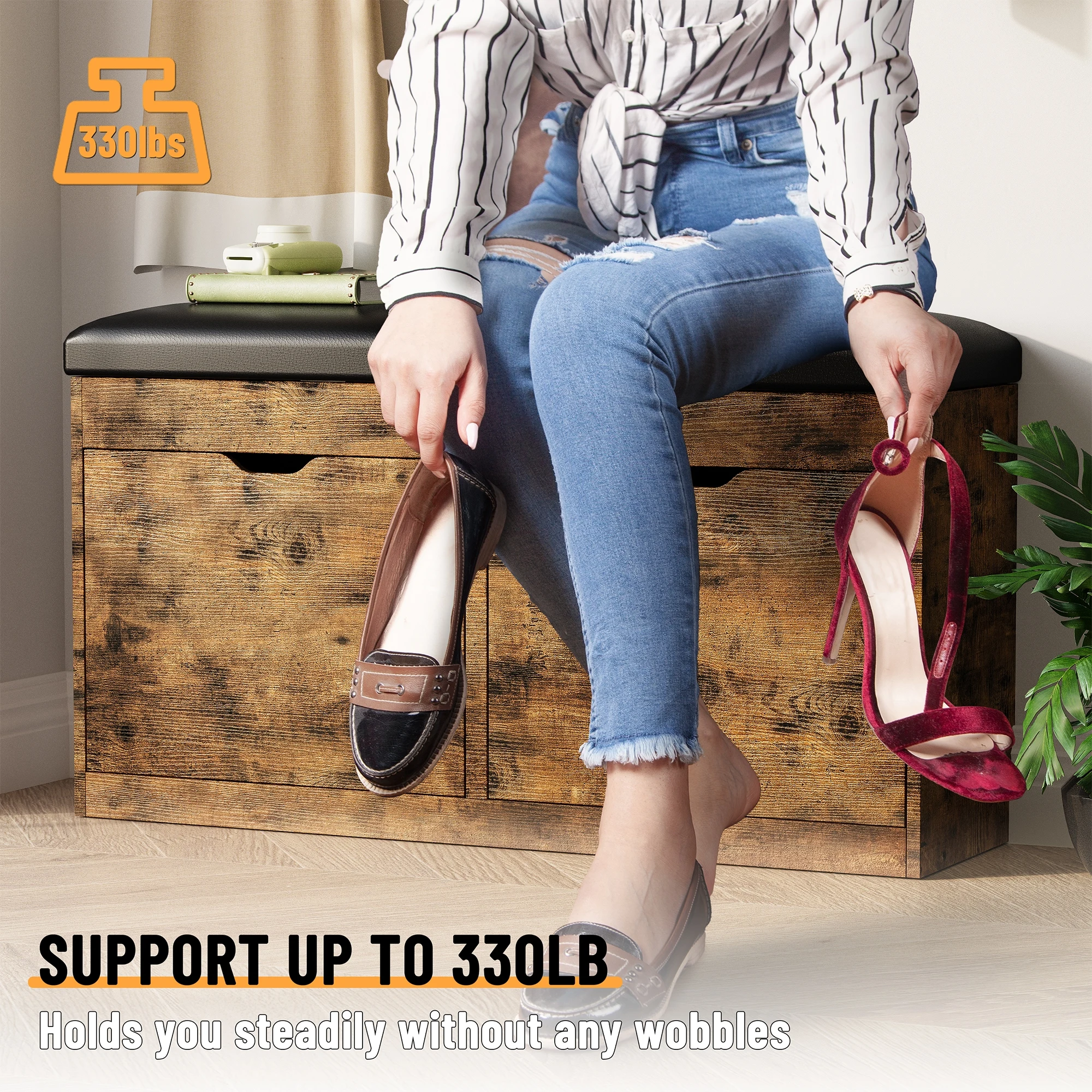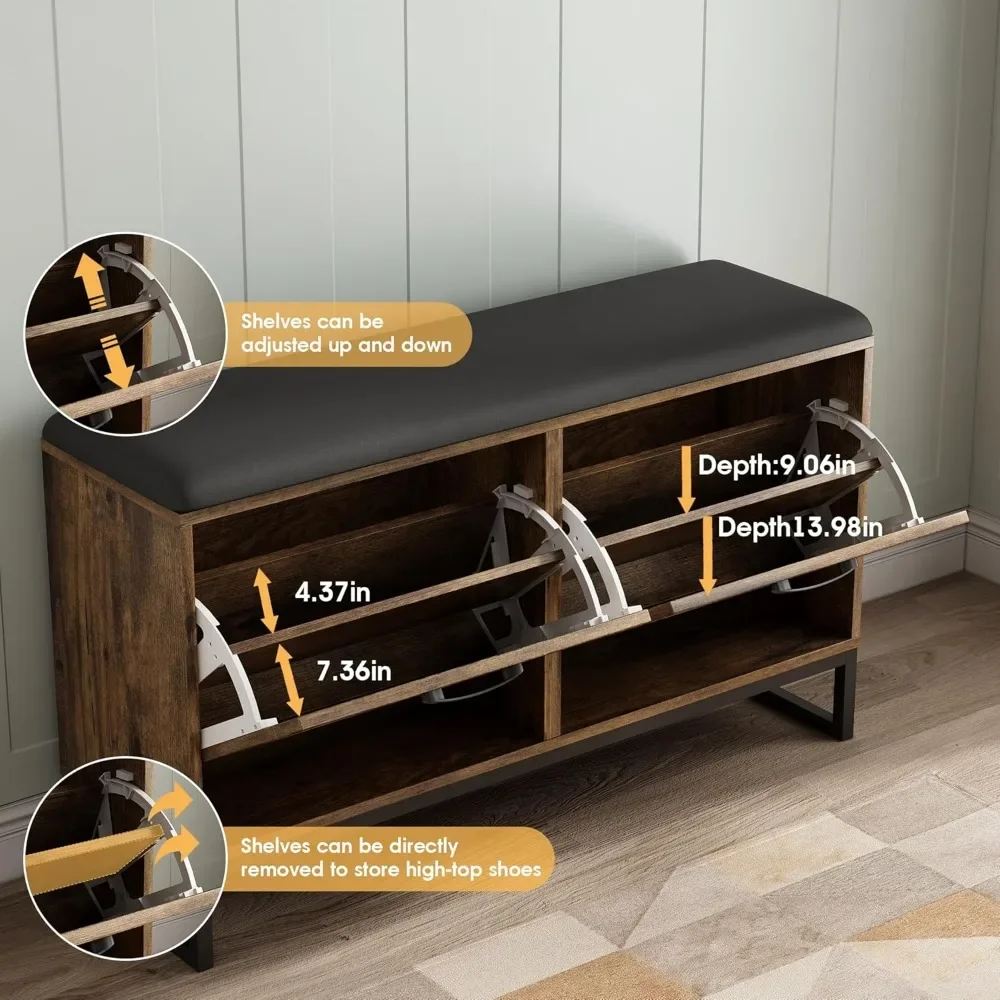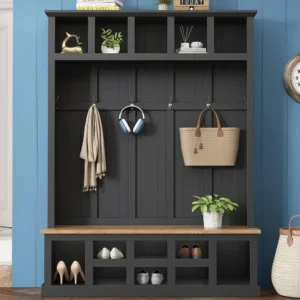The Morning Rush Reality: Why Your Entryway Sets the Tone for Your Day
We’ve all been there—frantically searching for keys, digging through piles of shoes for a matching pair, or realizing an important document is missing just as you need to leave. These small delays compound quickly, turning what could be a calm morning into a stressful race against the clock.
Your entryway isn’t just another room in your home; it’s the critical transition space between your peaceful sanctuary and the outside world. When cluttered and disorganized, it becomes a bottleneck that slows your entire morning routine and elevates stress levels before you’ve even started your day.
Think of your entryway as a “launch pad”—the final checkpoint before takeoff into your daily activities. Research suggests that environmental organization has a direct impact on stress levels, with organized spaces reducing anxiety and promoting clearer thinking. By transforming your entryway from chaos central to command center, you’re not just clearing physical clutter—you’re setting yourself up for mental clarity and emotional calm.
In this guide, we’ll explore how strategic space-saving solutions for entryway organization can revolutionize your mornings, turning rushed and stressful departures into smooth, efficient transitions.
Night-Before Preparation: The Foundation of Smooth Mornings
The secret to stress-free mornings often lies in what happens the night before. Creating an evening routine focused on entryway preparation can save you valuable minutes when you need them most.
Your Night-Before Checklist:
Outfit Selection and Placement
– Choose complete outfits (including accessories) for each family member
– Place them in an accessible location near the entryway
– For children, arrange clothes in easy-to-grab bundlesWork/School Bag Preparation
– Pack bags completely (lunch, homework, gym clothes, devices)
– Position packed bags on dedicated hooks or in designated zones
– Charge electronic devices overnight near bag storageDocument and Essential Gathering
– Collect needed paperwork, forms, or files
– Place keys, ID cards, and transit passes in a designated dish or hook
– Set out any special items needed for the next day (sports equipment, presentation materials)5-Minute Entryway Reset
– Return misplaced items to their proper homes
– Clear flat surfaces of clutter and debris
– Ensure pathways are clear for morning movement
This preparation creates a “clean slate” for your morning departure. Studies show that evening preparation can save an average of 15-20 minutes during morning rushes, significantly reducing stress and forgotten items.
When establishing these habits, consider implementing creative strategies for organizing small entryways with benches that maximize functionality while minimizing footprint—perfect for homes where space is at a premium.
Entryway Assessment: Understanding Your Space and Needs
Before implementing organization solutions, take time to understand how your entryway currently functions and what it needs to serve you better.
Entryway Assessment Checklist:
- Traffic Patterns: Observe how family members naturally move through the space
- Problem Areas: Identify where items typically accumulate or get lost
- Space Constraints: Measure available floor space, wall space, and ceiling height
- Seasonal Challenges: Note how your entryway needs change throughout the year
- Family Requirements: List must-have storage for each household member
Once you understand your specific needs, apply the “SPOT” decluttering method to create a clean foundation:
- Select: Identify what truly belongs in your entryway
- Purge: Remove items that don’t serve your morning routine
- Organize: Group similar items together
- Tidy: Create designated homes for everything
This assessment phase is crucial—many organization attempts fail because they don’t address actual usage patterns or unique family needs. Take time to map your space, noting dimensions and traffic flow. Consider tracing your typical morning movements to identify bottlenecks.
For homes with particularly challenging layouts, exploring creative ideas for maximizing space in entryways can reveal solutions you might not have considered, like vertical storage or multi-functional furniture.
Essential Storage Solutions: Creating Zones for Maximum Efficiency
Transforming your entryway into a morning efficiency hub requires thinking in terms of functional zones, each designed to streamline specific aspects of your departure routine.
Zone 1: Outerwear Management
- Wall-mounted hooks and racks
- Install at appropriate heights for adults and children
- Space hooks adequately to prevent crowding
Consider double-tiered systems for maximizing vertical space
Closet organization
- Use slim hangers to maximize rod space
- Install door organizers for accessories
Label sections for different family members
Seasonal rotation strategy
- Store off-season items in high shelves or under-bench storage
- Keep only current weather gear accessible
- Implement quarterly rotation schedule
Zone 2: Footwear Organization
- Multi-tier shoe racks
- Choose narrow, vertical designs for small spaces
- Select open styles for wet shoes to dry properly
Consider adjustable shelving for different shoe heights
Weather-specific solutions
- Use water-resistant trays for boots and wet shoes
- Create a designated spot for umbrella storage
Install a small bench for putting on/removing footwear
Family systems
- Assign color-coded bins for each family member
- Create low-level storage for children’s shoes
- Limit each person to 2-3 pairs in the entryway
Zone 3: The Command Center
- Key and mail management
- Install a small key hook panel near the door
- Add a slim mail sorter to process incoming papers
Create an “outgoing” tray for items that need to leave the house
Essential document organization
- Use a wall pocket for permission slips and time-sensitive papers
- Create a small binder for frequently referenced information
Implement a “morning reminder” clipboard for special items
Device station
- Set up a charging dock for phones and watches
- Create a dedicated spot for work badges and transit cards
- Keep a backup power bank fully charged
Zone 4: Bag and Accessory Control
- Dedicated hooks and storage
- Install sturdy hooks for backpacks and work bags
- Consider height-appropriate placement for different users
Add labels for assigned spots
Accessory organization
- Use small baskets for gloves, scarves, and hats
- Create divided drawers for sunglasses and small items
Implement seasonal rotation for accessories
Specialized containment
- Use waterproof bins for sports equipment
- Install mesh bags for small children’s items
- Create grab-and-go emergency kits
For comprehensive solutions that address multiple storage needs simultaneously, explore versatile entryway storage bench options that combine seating with hidden storage compartments.

For complete entryway organization systems, combination solutions with hooks and storage offer all-in-one functionality that maximizes limited space while providing dedicated zones for each morning essential.
Family-Friendly Systems: Making Organization Work for Everyone
Creating an organized entryway is one thing—maintaining it with a busy family is another challenge entirely. The key is developing systems that every family member can understand and use independently.
Age-Appropriate Organization
- Preschoolers (2-5 years)
- Use picture labels to identify their belongings
- Install low hooks they can reach independently
Create simple, color-coded systems for their items
School-age children (6-12)
- Implement checklists they can follow themselves
- Teach “one-in, one-out” habits for belongings
Assign specific zones they’re responsible for maintaining
Teens (13+)
- Involve them in designing their storage solutions
- Create charging stations for electronic devices
- Develop shared calendar systems for activities
Visual Organization Systems
Visual cues can dramatically improve family compliance with organization systems:
- Use consistent colors for each family member across all storage
- Apply clear labels with both words and pictures for young children
- Create simple visual checklists for morning and evening routines
- Position “return bins” for items that need proper storage later
The most successful family entryways contain personalized zones for each household member, creating a sense of ownership and responsibility. Teaching children organizational habits through modeling is far more effective than verbal instructions—demonstrate your own organization routine consistently.
For homes with multiple children and busy schedules, specialized solutions for family entryway organization needs can help accommodate sports equipment, school materials, and the general abundance of items that accompany family life.
Seasonal Adaptations: Keeping Your Entryway Functional Year-Round
A truly effective entryway adapts to changing needs throughout the year, expanding and contracting storage as seasonal items rotate.
Winter Organization
- Install heavy-duty hooks for bulky coats and snow pants
- Use water-resistant boot trays with drainage capability
- Create a drying station for wet mittens and hats
- Implement a dedicated spot for ice scrapers and snow brushes
- Add extra storage for holiday-related items during this busy season
Spring Transition
- Rotate out heaviest winter gear to reclaim space
- Create easy access for umbrellas and rain boots
- Implement a “muddy shoes” station with washable mats
- Add storage for sports equipment as activities resume
- Introduce lighter-weight baskets for seasonal accessories
Summer Simplification
- Minimize coat and jacket storage
- Create grab-and-go stations for sunscreen and hats
- Implement beach/pool bag organization
- Establish a “summer shoes only” rule to reduce clutter
- Use lightweight, breathable storage for summer items
Fall Preparation
- Gradually reintroduce coat storage as weather cools
- Create a school supply zone for the new academic year
- Implement backpack and lunch bag stations
- Add hooks for light jackets before winter gear returns
- Begin rotating summer-specific items to off-season storage
Off-season storage can typically reclaim about 60% of your entryway space when properly implemented. For entryways that experience high traffic throughout the year, implementing strategies for managing busy entryways can help maintain organization even during the most hectic seasons.

Maintenance Routines: Preserving Your Organized Entryway
Even the best organization system will eventually fail without regular maintenance. Implementing simple routines keeps your entryway functional long-term.
Daily Reset (5 minutes)
- Return items to designated spots
- Clear all horizontal surfaces
- Hang up coats and bags
- Arrange shoes in proper storage
- Prepare essential items for tomorrow
Weekly Maintenance (15 minutes)
- Wipe down all surfaces and storage units
- Return misplaced items to proper rooms
- Check for and process accumulated mail or papers
- Sweep/vacuum entryway floor thoroughly
- Evaluate upcoming week’s special needs
Monthly System Evaluation (30 minutes)
- Assess what’s working and what isn’t
- Adjust storage solutions as needed
- Implement seasonal rotations
- Remove accumulated items that don’t belong
- Reinforce family organization habits
The “one in, one out” rule is particularly effective for entryway management—when a new jacket, bag, or pair of shoes enters regular rotation, an older one should move to a different storage location or leave the home entirely.
Creating accountability through family participation is essential—assign specific responsibilities and create simple checklists that even young children can follow. For busy families, specialized solutions for shoe storage in entryways can help tame one of the most common sources of entryway clutter.
Coat Rack Shoe Bench, Corner Entryway Bench, Corner Hall Tree, Shoe Bench for Entryway
$313.58 Select options This product has multiple variants. The options may be chosen on the product pageEntryway Bench with Back, Modern Entryway Bench, Shoe Bench for Entryway
Price range: $463.13 through $474.44 Select options This product has multiple variants. The options may be chosen on the product pageShoe Storage Bench for Entryway
$459.02 Select options This product has multiple variants. The options may be chosen on the product pageCorner Entryway Bench, Entryway Bench with Cushion, Modern Entryway Bench, Shoe Bench for Entryway
$476.34 Select options This product has multiple variants. The options may be chosen on the product pageBench with Hooks and Storage, Entryway Hall Tree, Mudroom Bench with Cubbies, Mudroom Bench with Shoe Storage
$818.38 Select options This product has multiple variants. The options may be chosen on the product pageModern Entryway Bench, Wood Entryway Bench, Wood Mudroom Bench
$497.69 Select options This product has multiple variants. The options may be chosen on the product page
Aesthetic Considerations: Blending Function with Style
A well-organized entryway doesn’t need to sacrifice beauty for functionality—the two can complement each other perfectly with thoughtful design.
When selecting storage furniture, choose pieces that align with your home’s existing aesthetic. Natural wood tones create warmth in traditional homes, while sleek, minimal designs with clean lines suit contemporary spaces. Consider how stylish modern bench options can serve as both functional storage and design statements.
Use decorative elements that serve dual purposes:
– Attractive baskets that contain seasonal items
– Decorative hooks that offer both style and function
– Mirror placement that both expands visual space and serves morning preparations
– Artwork that incorporates hidden storage
Color coordination can transform organization from merely functional to visually appealing:
– Choose storage pieces in complementary colors
– Use consistent bin colors for a cohesive look
– Consider how your organizational elements contribute to the overall color scheme
Balance between open and closed storage creates visual interest while hiding clutter:
– Use closed storage for items that can look messy
– Display attractive baskets or containers on open shelving
– Incorporate a mix of hidden storage with display-worthy organization

Supplemental Strategies: Beyond the Basics
Is entryway organization different for apartments vs. houses?
Apartment entryways typically require more vertical storage solutions and multi-functional pieces. Focus on wall-mounted options and furniture that serves multiple purposes. Houses might have dedicated mudrooms or larger entryways, allowing for more substantial storage systems or separation of seasonal items.
What constitutes an “entryway” in open floor plans?
In open floor plans, create a defined entryway using furniture placement, area rugs, or decorative screens. The principles remain the same—establish zones for incoming items, outgoing essentials, and transitional needs—even without walls to define the space.
What are the essential entryway organization tools for families vs. singles?
Families typically need more individualized storage (labeled sections, multiple heights, greater capacity) and robust systems that can withstand heavy use. Singles can often implement more aesthetically-focused solutions with less emphasis on durability and volume, though the fundamental zones remain similar.
How do mudroom solutions compare to hallway organization systems?
Mudrooms typically accommodate more robust storage for outerwear and footwear, including dedicated cleaning zones for dirty items. Hallway organization tends to focus more on transitional storage and appearance. For homes with limited space, shoe organization solutions for mudrooms can be adapted to hallway dimensions with a greater emphasis on visual appeal.
From Chaos to Calm: Your Action Plan for Tomorrow Morning
With the right entryway organization system, your mornings can transform from chaotic scrambles to smooth, stress-free departures. Remember that organization is a process, not a one-time event—start with the fundamentals and build your system over time.
Begin your transformation with these three simple steps:
1. Tonight, implement the 5-minute reset routine to create a clean slate
2. This weekend, assess your entryway needs and establish one organized zone
3. Over the next month, gradually build out your complete system, including minimalist approaches to entryway organization if you’re working with limited space
Imagine walking out your door tomorrow morning without the frantic search for keys, the pile of shoes to sort through, or the last-minute panic about forgotten items. That calm, organized departure isn’t just a dream—it’s an achievable reality with strategic entryway organization.
The small changes you implement today will compound into significant time savings and stress reduction tomorrow. Your entryway isn’t just a pass-through space—it’s the foundation for successful days and peaceful returns home. By transforming this critical area from chaos central to command center, you’re setting yourself up for smoother mornings and more peaceful days ahead.







